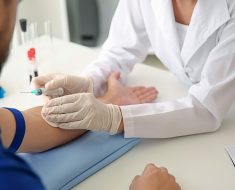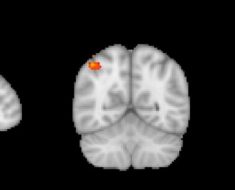
The American Heart Association (AHA) estimate that more than 100 million people in the United States live with hypertension, or high blood pressure.
Dubbed the silent killer due to its asymptomatic nature, high blood pressure damages blood vessels over time.
This may lead to a range of serious conditions, including kidney failure, heart failure, heart attack, or stroke.
Luckily, there are several things that a person can do to lower their blood pressure. Eating sensibly, drinking only in moderation, managing stress, and taking one’s medication are only some of the changes that can reduce hypertension.
Now, researchers make a new addition to this list of positive changes: electronic counseling (e-counseling).
A new study — which was led by Robert Nolan, the director of cardiac e-health at the University Health Network’s Peter Munk Cardiac Centre in Toronto, Canada — shows that adding virtual counseling to regular medical therapy lowers blood pressure and the risk of developing cardiovascular problems in the following 10 years.

How does e-counseling affect hypertension?
Nolan and his team explain that using the Internet in search of health tips is “the third most popular online activity,” with 72 percent of users engaging in it.
However, people need guidance to help them tell accurate from inaccurate medical information. In fact, one survey found that as many as 91 percent of online information seekers who live with a chronic health condition say that they need such guidance.

So, Nolan and team set out to investigate whether e-counseling would help with this need. In order to do so, they divided 264 men and women who had hypertension into two groups.
One group received regular emails with links to online tutorials and interactive online tools showing the participants how to improve their cardiovascular health and motivating them to do so.
The other group only received generic emails with information about blood pressure management.

A ‘meaningful reduction’ in blood pressure
A year later, the researchers measured the participants’ blood pressure and found that those in the intervention group had an average drop of 10 points in their systolic blood pressure — that is, from 141 to approximately 130.
Systolic blood pressure is the first number showing in a blood pressure reading, and hypertension occurs when this number is 130 or above. By comparison, the control group only saw a drop of 6 points.
The researchers deem this reduction “meaningful” and quote a previous study that found that a 10-point decrease in systolic blood pressure can reduce all-cause mortality risk by 13 percent.
Nolan comments on the study’s findings, saying, “Internet-based supportive lifestyle counseling does indeed work effectively when it’s clinically organized and when it complements medical therapy.”
“We aimed for a program that’s in the middle of the spectrum,” he explains. “It’s automated, but it’s also interactive,” he goes on, also stressing the importance of actively engaging the patients to improve their health.
“The interactive tools help people self-assess their changes in blood pressure or lifestyle behavior, which is very important. It gives them feedback, builds confidence, and helps them sustain their changes.”
Robert Nolan
Source: Read Full Article





